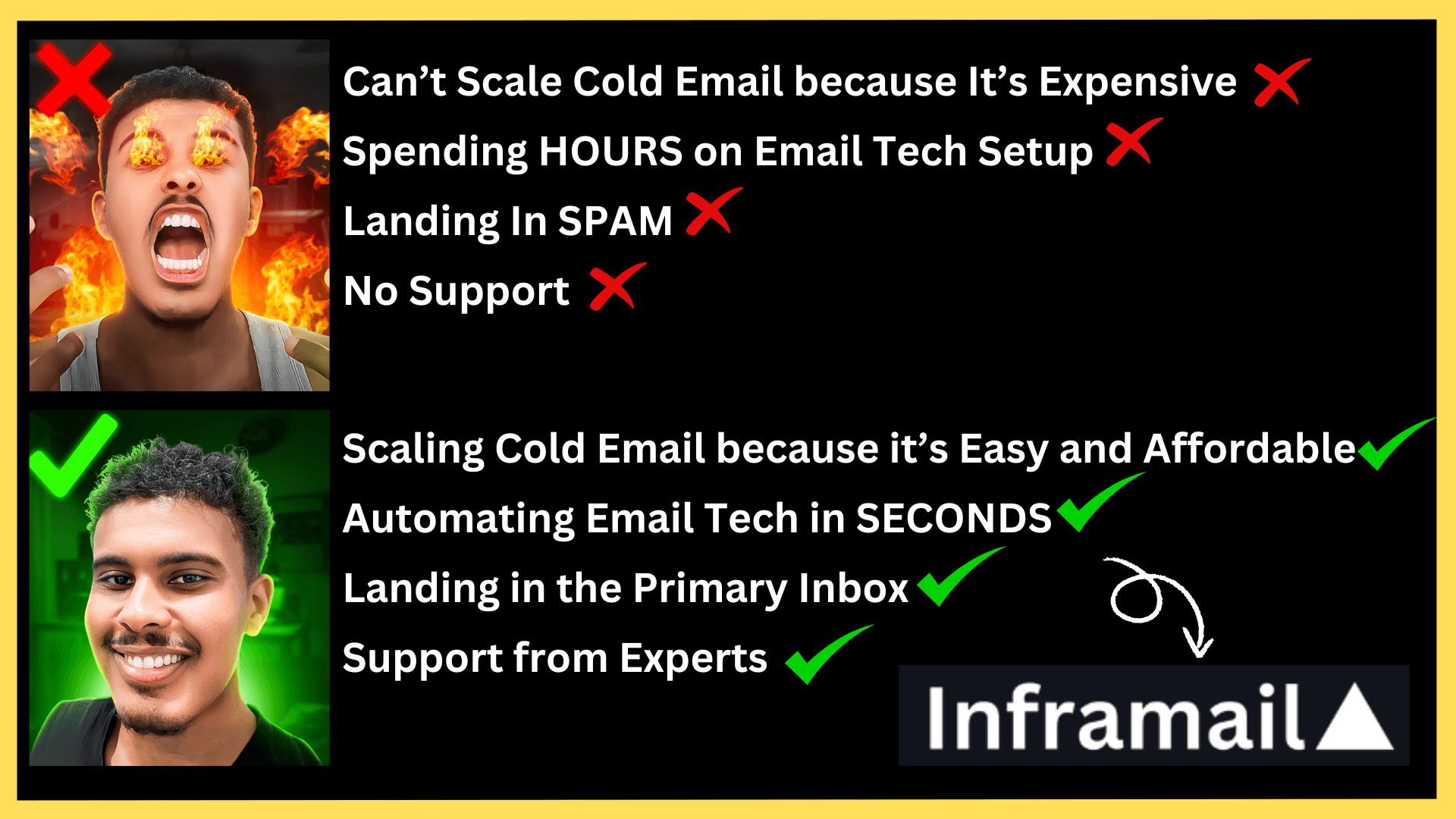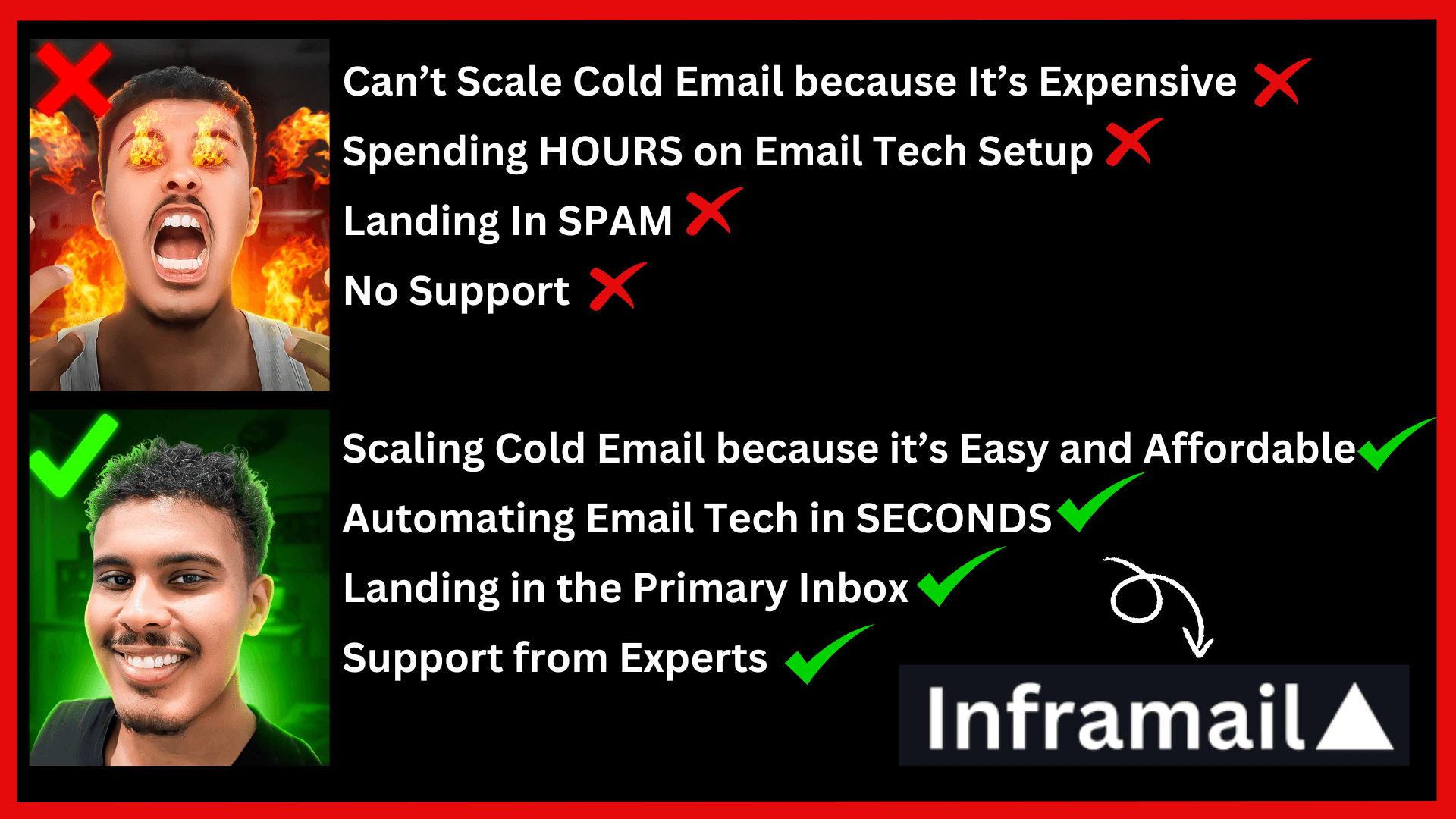Nov 6, 2024
The Importance of Getting Your Cold Email Length Right

Cold emails are often your first impression with potential clients or prospects, making their structure and content incredibly important. Length significantly affects whether your email gets read or lands in spam folders. If it is too long, you risk losing the reader’s attention; if it is too short, you may fail to convey real value. Between meetings, lunch breaks, deep-focus work, and water cooler conversations, nobody today has the luxury of reading long emails with many paragraphs and fat sentences. We rarely have enough time to skim through the tiny text on phones or websites.
Revamping Cold Emails for the Modern Reader
According to the art of skimming, we read:
The headlines
Subheadings
Bullet points
Any bolded words in between
Anything that looks out of the ordinary
That means big chunks of text anywhere remain unread, just like the terms and conditions of every product/website. Your cold emails, too, could meet a similar fate if you don’t update the format to fit people’s reading patterns today.
Short Emails Get Better Results
Research shows that shorter cold emails get better results. For instance, a study by Boomerang found that emails between 50 and 125 words get the highest response rates. Emails that are too short (less than 50 words) perform poorly, likely because they lack the context to engage readers and prompt them to reply.
Brief Emails Get More Clicks
It’s not just responses you have to worry about. Cold emails also often include a call to action, encouraging the recipient to click on a link. Here, length also matters. Research by Backlinko found that shorter emails with an optimal word count improve click-through rates and responses. A concise email that aligns with the prospect’s company and addresses their pain point feels personal and well-targeted.

Related Reading
• Automated Lead Generation
• Email Prospecting
• How to Generate B2B Leads
• How to Warm Up Email Domain
• How Many Emails Can You Send Before Considered Spam
• Best Time to Send Cold Emails
• How to Cold Email
• Best Cold Email Templates B2B
• Email Outreach Best Practices
• Email Outreach Strategy
How Long Should a Cold Email Be?

According to multiple sources, the ideal length of a cold email should range between 50 to 125 words. That’s about 5-15 lines of text in your cold email outreach. Response rates to emails that were 75-100 words long were a whopping 51%, as reported in a study by Boomerang, which surveyed up to 40 million emails.
What is the Ideal Length of a Cold Email?
Cold Emails Have a Sweet Spot of 75-125 Words
According to a Lemlist study, the optimal length for cold emails is 75-125 words. Data shows that emails with around 120 words led to a 52% booking rate, compared to just 20% for emails with 300+ words.
Very short emails (less than 50 words) resulted in a 40% booking rate, which is higher than emails around 200 words (37%) or 250 words (25%). Your emails should be brief but not too short.
Cold Email Length | Booking Rates |
50 | 40% |
120 | 52% |
200 | 37% |
250 | 25% |
300 | 19% |
Another study by Constant Contact showed that emails with 20 lines of text tend to generate higher click-through rates (0.16%) than emails with 10 lines (0.08%), 30 lines (0.11%), or more (0.10%).
Lines of Text | Click-through Rate |
10 | 0.08% |
20 | 0.16% |
30 | 0.11% |
40 | 0.10% |
50 | 0.10% |
Use short paragraphs and line breaks to make your cold emails even more effective. Don’t use formatting (this seems unnatural). But make sure that your message is skimmable and easy to read.
Keep in mind that these findings may not apply to every industry. To see what resonates most with your target audience, it's essential to experiment with different email lengths. Do they respond better to concise cold emails or detailed sales emails?
Examples of Effective Cold Emails
Let me share two examples: one that worked and the other that didn’t.
1. The Long Email That Failed
I once sent a cold email that was over 300 words long. It started with a detailed introduction about myself and my company. Then, I crammed in descriptions of multiple services we offered, all in a single email.
To top it off, I included two lengthy case studies to showcase past successes. I ended with a vague request for a meeting. The result? Not a single response.
Looking back, the email was far too long and scattered. Instead of engaging the recipient, it overwhelmed them, burying the central point under too much information.
2. The Short Email That Succeeded
In another campaign, I kept the email under 100 words. I started with a direct hook: “Are you struggling to increase your sales conversions?” Then, I shared a clear value proposition: “I help businesses improve cold email response rates with proven strategies.” I ended with a simple call to action: “Can we schedule a 15-minute call this week to discuss this?”

This email had a 40% response rate.
Why are Short Cold Emails So Effective?
It was clear, direct, and respectful of the recipient’s time.
The hook immediately caught their attention.
The value proposition gave them a reason to care.
The call to action made it easy for them to respond.
This approach works because it focuses on one key message.
Your emails don’t need to be long to be effective. Keep them concise, and you’ll get better results.
As Blaise Pascal, the 17th-century French philosopher, observed: “I’m writing you a long letter because I don’t have time to write a short one.” Crafting short emails often requires more effort than writing long ones. But the payoff is substantial.
significantly boost your click-through rates
The Science of Succinctness: Crafting Cold Emails That Maximize Click-Through Rates
Another study by email software, Constant Contact, revealed a 16% click-through rate for emails with approximately 20 lines of text. Therefore, we recommend that cold emails be 5-15 lines of text or 50-150 words. That is succinct, scannable, and strong enough to capture the 8-second attention span of readers today. You can test out extended lengths of up to 15 lines in your follow-up emails. As long as it includes credible information and a clear and valuable pitch relevant to the reader, it is enough. Long and winding emails will get buried in the sea of emails people receive every day.
Short & Sweet: Why Cold Emails Need to Be Brief
In B2B sales, a good cold email stands between you and a deal. That means a lot is riding on the ‘good’ aspect of your email. How well it values the prospect’s time makes a cold email suitable. One way to write an effective cold email is to keep it short. Here’s why ‘short’ is good:
It’s easier to read. When there is a mountain of text we must go through, we tend to put it off unless our boss sends it or it is a book. If it’s short and easier to read, prospects can quickly scan your email and decide to reply or ignore it within seconds.
Clear call-to-actions that end these emails also unburden the reader of the decision-making process.
It explicitly targets today’s email readers. It’s common knowledge that their attention spans are dwindling to a few seconds, and that’s true for all of us professionals.
Optimizing Cold Emails for Mobile
Studies show that even company-wide emails from leadership have only about 50% open rates–an indicator of information overload among people today. So, shorter cold emails respect the decision makers' time. It’s mobile-friendly. Up to 42% of people read emails from their smartphones, and shorter emails look the best on mobile phones. It’s best to consider that most decision-makers are checking their emails on their smartphones, so brief, bulleted, and neatly formatted emails that are easily scannable make for an effective cold email strategy.
When to Write Longer Cold Emails
While short cold emails are often more effective, there are scenarios where a longer cold email can be beneficial. Some of them are:
A longer email allows you to provide comprehensive details about your product or service, which can help the recipient make a more informed decision. With more space, you can include case studies, testimonials, and specific data points that build credibility and trust with the recipient.
A longer format lets you preemptively address common objections or concerns, making the recipient more likely to respond positively. You have more room to personalize the email, showing that you’ve researched and understand the recipient’s specific needs and challenges.
More space allows for a clear and compelling call to action, making it easy for the recipient to understand the next steps. Some scenarios that would better explain the use of long cold emails are. If your offering is intricate and requires a detailed explanation, a longer email might be necessary.
Break down the solution step-by-step, highlighting how it addresses specific pain points the recipient might face. Recipients must understand the value proposition before committing for expensive products or services.
A longer email allows for a more in-depth explanation of the benefits, including ROI calculations or client success stories. This builds trust and positions you as an expert in the field.
For contacts you’ve interacted with, a longer email can be a way to re-engage and offer further insights or resources. This could be an update on a relevant industry trend or a new case study demonstrating how your solution benefits companies similar to theirs. If you’ve researched the recipient and their company extensively, a longer email can showcase your understanding of their needs.
Highlight shared challenges and industry trends relevant to them, and tailor your solution to their unique situation. This personalization can be very effective, but ensure the length doesn’t overshadow the core message.
A longer email helps provide the recipient with all the information they need to make an informed decision, increasing the chances of a positive response.
Aim For Brevity, But Prioritize Substance
While some studies suggest emails with 20 lines might have higher click-through rates, exceeding that length can negatively impact open and response rates. Aim for below 200 words. There can be exceptions.
Crafting Detailed Cold Emails: How to Break Down Complex Offers for Maximum Impact
If your offering is highly complex and requires a detailed explanation, exceeding 200 words might be necessary. But remember, break up the text with bullet points, subheadings, and visuals to improve readability. The key is to prioritize concise clarity. Focus on the core message, highlight your value, and make it easy for the recipient to respond. Consider a follow-up email with additional information after establishing initial contact if needed.
For example:
Dear [Recipient Name],
My name is [Your Name], and I help companies like [Recipient Company] optimize procurement for efficiency and cost savings. I noticed your recent success in [Mention Specific Achievement]. Many companies struggle with time-consuming manual processes and a lack of vendor visibility. Our cloud-based solution, [Product Name], automates workflows and provides real-time data, saving you time and money.
We’ve helped similar companies achieve significant results. Would you be open to a quick call to discuss your specific needs?
[Company A]: Reduced procurement cycle times by 30%
[Company B]: Saved 15% on annual procurement costs
[Company C]: Improved supplier collaboration and on-time delivery rates
I understand that every company has unique needs. Would you be open to a quick 15-minute call to discuss your current procurement challenges and how [Your Company] can help? Thank you for your time and consideration. I look forward to hearing from you soon.
Sincerely,
[Signature]
Mastering the Art of Skimmable Long Cold Emails: Structuring for Maximum Engagement
This longer cold email template, while exceeding the ideal word count, promotes skimability and readability through several tactics:
Compelling Subject Line
Clear Introduction
Targeted Hook
Bullet Points
Concise Call to Action
While lengthier, this structure allows for targeted information delivery in a scannable format, making it more likely to capture the recipient’s attention and interest despite exceeding the typical word count for cold emails.

Related Reading
• Best Cold Email Software
• B2B Cold Email Response Rates
• How to Improve Email Deliverability
• Unlimited Email Hosting
• Email Testing Tools
• Best Email Deliverability Tools
• Sales Email Automation Tools
• Email Scraping Tools
• Best Sales Prospecting Tools
• Email Warm Up Tools
• Email Personalization Tools
• Mailscale Alternatives
• Mailforge Alternatives
Tips to Write a Great Cold Email Maintaining the Ideal Length

Clickable Subject Line
How Long Should The Subject Line Be?
Most cold email experts explain that short subject lines are the go-to answer. I’ve experimented with one- to two-word subject lines myself, with decent results.
Short subject lines, like “Important”, “Quick question”, or “Urgent” tend to get reasonable open rates (> 50%) because they pique curiosity.
They create an information gap, leaving the recipient wanting to know more. This isn’t necessarily the most efficient strategy.
Number of characters | Response rate |
1-15 | 16.8% |
16-35 | 19.6% |
36-50 | 22.3% |
51-70 | 22.1% |
70+ | 20.5% |
A study by Backlinko showed that the best cold email subject lines are between 36 and 50 characters. This length generated 32.7% more replies than short email subject lines (1-15 characters). The explanation? Longer subject lines are more specific. An example is “Quick question about your latest blog post”.
Please don’t overdo it. Cold email subject lines exceeding 70 characters tend to lose impact. And they often get truncated on mobile devices.
Your cold email’s subject line is like the cover of a book. If it doesn’t pique your reader’s interest, they won’t open your email, and all your hard work writing it will be for nothing. A good subject line should be concise and relevant and spark curiosity. Aim for 5 to 7 words.
Here are some examples of cold email subject lines that convert:
“Increase Your Sales by 30%”
“Quick Tip for Your Sales Team”
“Double Your Sales Potential”
Catchy Greeting
Once you’ve hooked your recipient with a great subject line, the next step is personalizing the greeting. Use the recipient’s name and keep the tone friendly and professional.
For example:
“Hi [Name],”
“Hello [Name],”
Intro Line That Hooks Attention
Now, it’s time to grab their attention immediately with the first line of your email. Aim for 1 to 2 sentences that mention a relevant fact, compliment, or pain point.
Here are some examples:
“I noticed [Company] has been expanding rapidly and thought you’d be interested in…”
“Your recent success with [specific project] caught my eye, and I wanted to share…”
Compelling Middle Section or Story
You’ll need to provide value in the middle section of your email. This is where you explain how your product or service can solve a problem or improve their situation. Aim for 3 to 4 concise but informative sentences—between 30 and 50 words should suffice.
Here’s an example:
“Our AI-driven sales tool has helped companies like [Similar Company] increase their lead conversion by 40%. It integrates seamlessly with your existing CRM and provides real-time insights to boost your team’s productivity.”
Strong Call to Action (CTA)
Your cold email should have a clear and direct call to action. Tell the recipient exactly what you want them to do next in 1 sentence. Aim for 10 to 15 words.
Here are some examples of effective CTAs:
“Would you be open to a 15-minute call next week to discuss further?”
“Can we schedule a quick demo to show you how it works?”
Solid Signature
Include a professional signature with your contact information to make it easy for the recipient to reach out. Your signature should be one to two sentences long.
Here are some examples:
“Best regards, [Your Name], [Your Position], [Your Contact Information]”
“Thanks, [Your Name], [Your Position], [Your Contact Information]”
A few examples that convert
Short cold email examples:
1. Subject: Boost Website Traffic by 30%?
Hi [Name]
I noticed your recent website redesign. At [Your Company], we helped similar companies increase website traffic by 30%.
Would you be open to a quick call to discuss some strategies?
Thanks,
[Signature]
2. Subject: Free Guide: 5 SEO Mistakes Killing Your Rankings
Hi [Name]
Hope you’re doing well. I came across your blog on [topic related to their industry].
In our experience, many companies make these five common SEO mistakes (download our free guide!). Would you like to chat to see if we can help improve your rankings?
Best regards,
[Signature]
Extended cold email examples:
1. Subject: Helping [Their Industry] Leaders Like You Reduce Costs
Dear [Name],
I’m reaching out because I’m impressed by [Their Company]’s innovative work in [Specific area]. At [Your Company], we specialize in helping [Industry] leaders like yourself optimize spending and reduce costs. Many companies struggle with [Specific pain point related to their industry]. Our AI-powered solution, [Product Name], helps by [Briefly explain 1-2 key benefits].
Would you be available for a quick 15-minute call to discuss your current challenges and determine whether we are a good fit?
In the meantime, check out our case study on how we helped [Similar company] achieve [Specific result].
Thanks,
[Signature]
2. Subject: Question About Streamlining Your [Specific Department]
Hi [Name],
My name is [Your Name], and I help [Department] teams at companies like [Their Company] improve efficiency and reduce workload. I recently read about your company’s focus on [Specific initiative related to their department]. At [Your Company], we’ve developed a unique solution that helps teams in [Department] automate tasks and free up valuable time.
Would you like a brief conversation to see if our approach aligns with your current goals?
Best regards,
[Signature]

Start Buying Domains Now and Set Up Your Email Infrastructure Today
Inframail revolutionizes cold email infrastructure with unlimited inboxes at a single flat rate. With Microsoft-backed deliverability and dedicated IP addresses, we help scale their outreach efficiently:
Agencies
Recruiters
SDRs
Main benefits of using our service:
Automated SPF, DKIM, and DMARC setup
Dedicated email servers for each user
16-hour priority support daily
Unlike traditional providers that charge per inbox and leave you wrestling with technical configurations, Inframail streamlines the entire process. We handle the complex infrastructure setup while you focus on reaching more prospects.
Simplifying Scalable Email Outreach: How InfraMail Supports Agencies, Recruiters, and Sales Teams
InfraMail provides a robust email infrastructure without the usual technical headaches and per-inbox costs, whether you're:
An agency looking to scale outreach
A recruiter connecting with candidates
An SDR driving sales
Start buying domains now and set up your email infrastructure today with our email infrastructure tool.
Related Reading
• Sendgrid Alternatives
• Amazon SES Alternatives
• Mailgun Alternatives
• Maildoso Alternatives
• Mailreef
• Cold Email Marketing Services
• Cold Email Services
• Lemlist vs Instantly
• Smartlead vs Instantly


